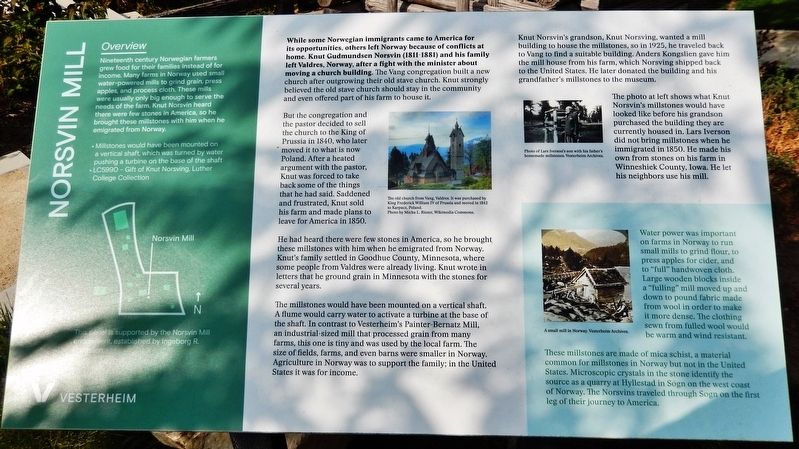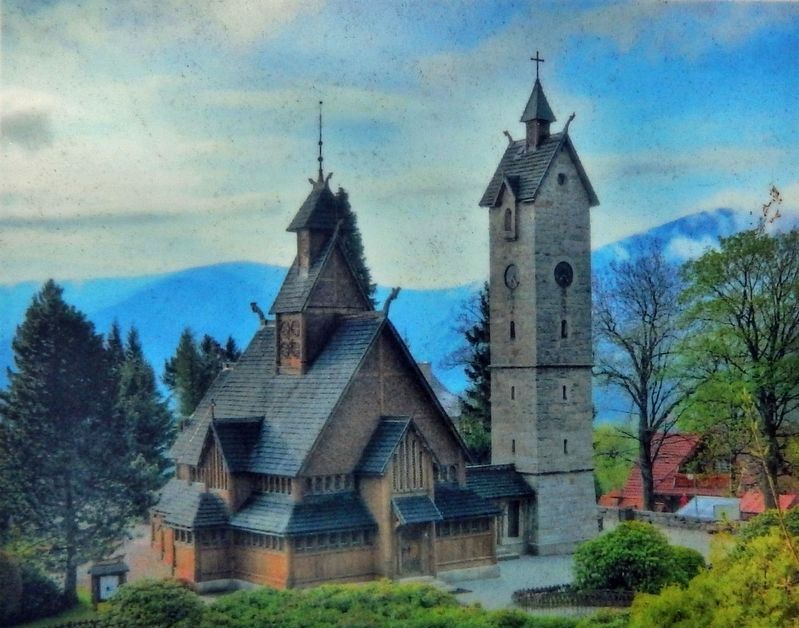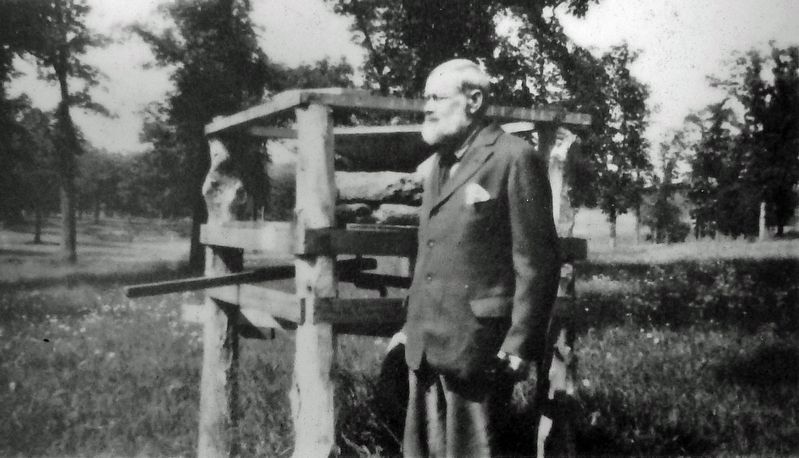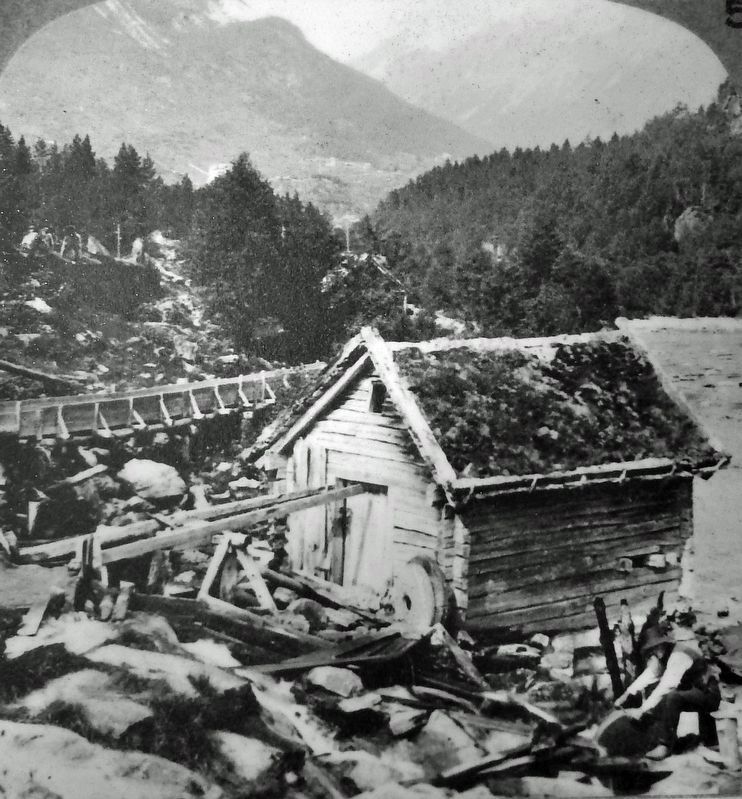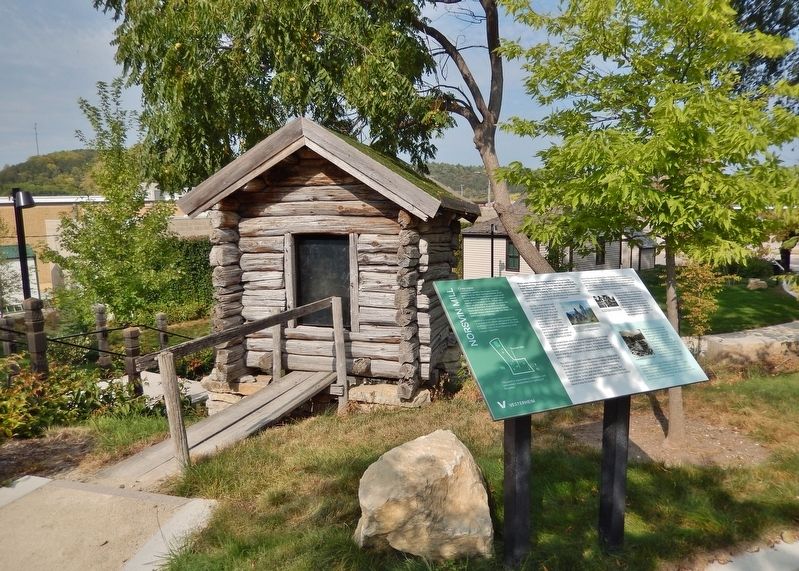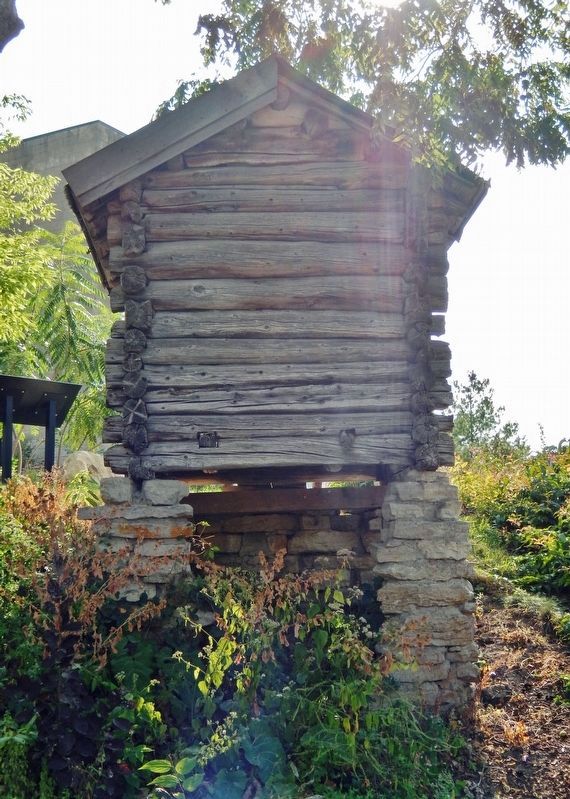Decorah in Winneshiek County, Iowa — The American Midwest (Upper Plains)
Norsvin Mill
Heritage Park, Vesterheim Norwegian-American Museum
Overview
Nineteenth century Norwegian farmers grew food for their families instead of for income. Many farms in Norway used small water-powered mills to grind grain, press apples and process cloth. These mills were usually only big enough to serve the needs of the farm. Knut Norsvin heard there were few stones in America, so he brought these millstones with him when he emigrated from Norway.
• Millstones would have been mounted on a vertical shaft, which was turned by water pushing a turbine on the base of the shaft
• LC5990 - Gift of Knut Norsving, Luther College Collection
While some Norwegian immigrants came to America for its opportunities, others left Norway because of conflicts at home. Knut Gudmundsen Norsvin (1811-1881) and his family left Valdres, Norway, after a fight with the minister about moving a church building. The Vang congregation built a new church after outgrowing their old stave church. Knut strongly believed the old stave church should stay in the community and even offered part of his farm to house it.
But the congregation and the pastor decided to sell the church to the King of Prussia in 1840, who later moved it to what is now Poland. After a heated argument with the pastor, Knut was forced to take back some of the things that he had said. Saddened and frustrated, Knut sold his farm and made plans to leave for America in 1850.
He had heard there were few stones in America, so he brought these millstones with him when he emigrated from Norway. Knut's family settled in Goodhue County, Minnesota, where some people from Valdres were already living. Knut wrote in letters that he ground grain in Minnesota with the stones for several years.
The millstones would have been mounted on a vertical shaft. A flume would carry water to activate a turbine at the base of the shaft. In contrast to Vesterheim's Painter-Bernatz Mill, an industrial-sized mill that processed grain from many farms, this one is tiny and was used by the local farm. The size of fields, farms, and even barns were smaller in Norway. Agriculture in Norway was to support the family; in the United States it was for income.
Knut Norsvin's grandson, Knut Norsving, wanted a mill building to house the millstones, so in 1925, he traveled back to Vang to find a suitable building. Anders Kongslien gave him the mill house from his farm, which Norsving shipped back to the United States. He later donated the building and his grandfather's millstones to the museum.
The photo at left shows what Knut Norsvin's millstones would have looked like before his grandson purchased the building they are currently housed in. Lars Iverson did not bring millstones
when he immigrated in 1850. He made his own from stones on his farm in Winneshiek County, Iowa. He let his neighbors use his mill.
Water power was important on farms in Norway to run small mills to grind flour, to press apples for cider, and to "full" handwoven cloth. Large wooden blocks inside a "fulling" mill moved up and down to pound fabric made from wool in order to make it more dense. The clothing sewn from fulled wool would be warm and wind resistant.
These millstones are made of mica schist, a material common for millstones in Norway but not in the United States. Microscopic crystals in the stone identify the source as a quarry at Hyllestad in Sogn on the west coast of Norway. The Norsvins traveled through Sogn on the first leg of their journey to America.
Erected by Vesterheim Norwegian-American Museum.
Topics. This historical marker is listed in these topic lists: Agriculture • Churches & Religion • Immigration • Settlements & Settlers. A significant historical year for this entry is 1850.
Location. 43° 18.286′ N, 91° 47.5′ W. Marker is in Decorah, Iowa, in Winneshiek County. Marker can be reached from North Mill Street just north of West Water Street, on the right when traveling north. The marker is located in Vesterheim Norwegian-American Museum Heritage Park. Touch for map. Marker is at or near this postal address: 520 West Water Street, Decorah IA 52101, United States of America. Touch for directions.
Other nearby markers. At least 8 other markers are within walking distance of this marker. Valders House (a few steps from this marker); Egge-Koren House (a few steps from this marker); Stabbur (within shouting distance of this marker); Wickney House (within shouting distance of this marker); Vesterheim (within shouting distance of this marker); Rovang Schoolhouse (within shouting distance of this marker); Tasa Drying Shed (within shouting distance of this marker); Haugan House (within shouting distance of this marker). Touch for a list and map of all markers in Decorah.
Related markers. Click here for a list of markers that are related to this marker. Vesterheim Norwegian-American Museum Heritage Park
Also see . . . Norsvin Mill. Excerpt:
Vang, Valdres, Norway (1800s). This small grist mill reflects the subsistence economy that drove many to emigrate from Norway. A vertical shaft and horizontal waterwheel allowed efficient use of a small mountain stream to grind grain.(Submitted on November 17, 2023, by Cosmos Mariner of Cape Canaveral, Florida.)
Credits. This page was last revised on November 24, 2023. It was originally submitted on November 16, 2023, by Cosmos Mariner of Cape Canaveral, Florida. This page has been viewed 54 times since then and 17 times this year. Photos: 1, 2, 3, 4, 5, 6. submitted on November 17, 2023, by Cosmos Mariner of Cape Canaveral, Florida.
